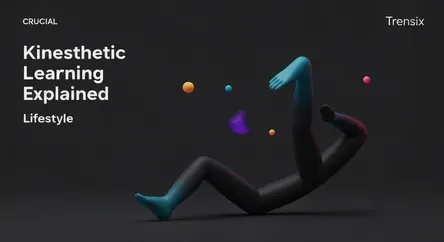Lifestyle
Kinesthetic Learning Explained

Discover kinesthetic learning, a hands-on approach where individuals learn by doing. See why this active learning style is gaining popularity.
What is it?
Kinesthetic learning, also known as tactile learning, is a learning style where individuals learn best through physical activity and hands-on experiences. Instead of just listening to a lecture or reading a book, kinesthetic learners absorb information by doing, touching, and moving. This can involve activities like building models, conducting science experiments, role-playing scenarios, or even just fidgeting while thinking. It's about engaging the body in the learning process, which helps to solidify concepts and create stronger neural pathways for memory. For these learners, abstract ideas become concrete when they can physically manipulate or interact with the subject matter.
Why is it trending?
This learning style is gaining traction as educators and institutions move away from a one-size-fits-all approach to teaching. There's a growing recognition that catering to diverse learning styles leads to better outcomes. Kinesthetic learning is particularly relevant in the rise of project-based learning (PBL) and STEM fields, which emphasize practical application and experimentation. The shift towards more interactive and less passive educational environments, both in classrooms and online, has highlighted the effectiveness of engaging the body to enhance cognitive function, retention, and overall student engagement.
How does it affect people?
For kinesthetic learners, embracing this style can be transformative. It turns education from a potentially frustrating, passive experience into an active and engaging one. Students who struggle to sit still can channel their energy productively, leading to improved focus and comprehension. This approach helps them connect abstract concepts to the real world, making learning more meaningful. In adulthood, understanding this preference can guide career choices towards hands-on professions, from surgery to carpentry. It also encourages lifelong learning through workshops, apprenticeships, and other practical, experience-based training methods that play to their strengths.